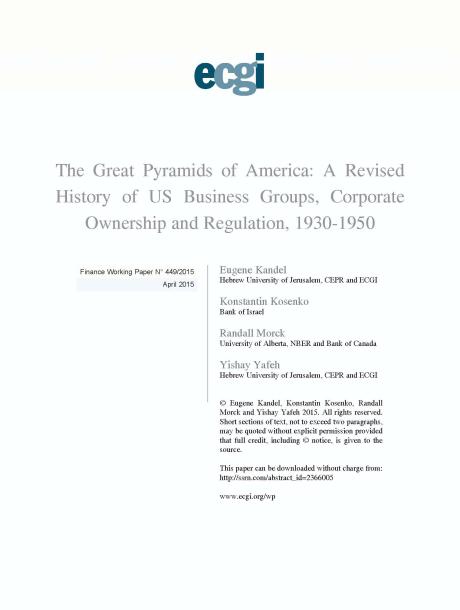
The Great Pyramids of America: A Revised History of US Business Groups, Corporate Ownership and Regulation, 1930-1950
Abstract
Most listed firms are freestanding in the U.S, while listed firms in other countries often belong to business groups: lasting structures in which listed firms control other listed firms. Hand-collected historical data illuminate how the present ownership structure of the United States arose: (1) Until the mid-20th century, US corporate ownership was unexceptional: large pyramidal groups dominated many industries; (2) About half of these resembled groups elsewhere today in being industrially diversified and family controlled; but the others were tightly focused and had widely held apex firms; (3) US business groups disappeared gradually, primarily in the 1940s, and by 1950 were largely gone; Their demise took place against growing concerns that they posed a threat to competition and even to society; (4) The data link the disappearance of business groups to reforms that targeted them explicitly ? the Public Utility Holding Company Act (1935) and rising inter-corporate dividend taxation (after 1935), or indirectly ? enhanced investor protection (after 1934), the Investment Company Act (1940) and escalating estate taxes. Banking reforms and rejuvenated antitrust enforcement may have indirectly contributed too. These reforms, sustained in a lasting anti-big business climate, promoted the dissolution of existing groups and discouraged the formation of new ones. Thus, a multi-pronged reform agenda, sustained by a supportive political climate, created an economy of freestanding firms.












